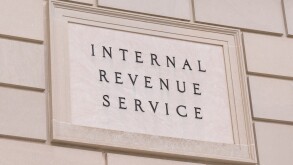At the last Economic and Financial Affairs Council’s (ECOFIN) meeting held on December 7 2021, EU member states agreed a general approach on updating rules for reduced VAT rates, following on from a 2018 EU Commission´s proposal that set out to update the list of goods and services for which reduced rates or even zero rates are allowed.
The new piece of legislation which will be sent to the European Parliament for its consultation by March 2022 will modify the way in which member states can apply reduced VAT rates, giving them greater flexibility and autonomy in determining them in their respective territories, making it possible to apply up to five different VAT rates, including a zero rate per member state.
The current rules on VAT rates are too restrictive, limiting the freedom of member states to set these rates. The rule provides for a general rate to be applied to the vast majority of supplies of goods and services with an exhaustive list of certain products and services to which reduced rates could be applied if each member state so decides.
However, in practice, there is a large number of temporary derogations and concessions regarding the application of reduced rates, which means that member states are applying approximately 250 different VAT rates in the EU, including zero rates in certain cases. It is precisely this wide disparity of rates and derogations what the EU Commission would like to avoid.
This enormous freedom that is intended to be given to the member states to determine VAT rates seems to run against a supposed EU tax harmonisation. However, these new rules on VAT rates should be observed in relation to the current aim of achieving a definitive of taxation at a destination level for all B2B and B2C transactions.
According to the EU Commission´s view, with goods and services taxed in the member state of destination, suppliers do not gain any significant benefit from being established in a member state with lower rates, so this freedom in setting VAT rates would not disrupt the functioning of the single market and, in principle, should not create distortions in the competition.
The new VAT rate structure should be as follows:
(i) Existence of a general rate not lower than 15%;
(ii) Member states will be allowed to apply two reduced rates as low as 5% to goods and services in up to 24 categories on the new Annex III of the VAT Directive;
(iii) Another reduced rate lower than 5%; and
(iv) In addition, member states will have the possibility of applying a zero rate. Thus, a de facto VAT exemption with no limitation of the right to deduct input VAT.
Points (iii) and (iv) would apply to a maximum of seven categories of supplies of goods and services listed in the mentioned Annex III considered to cover basic needs like foodstuff, medicines or pharmaceutical products.
Based on all the above, it would be possible for up to five different VAT rates to be applied in each member state.
Additionally, in order to comply with the objectives of a green taxation, the possibility for member states to apply reduced rates and exemptions to goods and services deemed detrimental to the environment and to the EU's climate change objectives will be removed by 2030.
Lastly, derogations and exemptions for specific goods and services currently in place for historical reasons will end by 2032 unless they are justified by public policy objectives.
From all the above, we can see that there will be less or even no concessions and derogations but more VAT rates per member state. It remains to be seen whether this wide disparity in the application of VAT rates will not in fact distort the functioning of the single market. The EU Commission´s view is clear on this point and as long as a system of taxation at destination functions properly, such distortion should not occur.
We can, however, anticipate that this new measure will very likely create an additional complication for businesses as far as they will have to take into account a large number of VAT rates.
This has been the case in the recent experience with the OSS schemes where e-commerce operators have had to map a large number of VAT rates in order to apply the correct rate to goods supplied to their customers in other member states. If member states make use of this new freedom to apply VAT rates with constant changes and modifications, the measure is bound to be controversial.
Fernando Matesanz
Managing director, Spanish VAT Services












